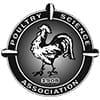Red, white or blue: The challenges of switching light wavelengths during egg production - Interpretive Summary
Published: January 5, 2023
By: https://poultryscience.org/
by Sam Shafer
Switching from blue to red light in laying operations may benefit birds, but there are caveats
According to new research in The Journal of Applied Poultry Research, hens can benefit from both blue and red light—if these lights are provided at specific points in production. The study, led by scientists at Mississippi, also highlights several problems that may arise from switching light wavelengths, including possible immune system issues.
For the study, the scientists examined how Hy-Line W-36 laying hens would react to a switch from blue light during the pullet phase and red light in the production phase.
Laying hens need light to grow and to start producing eggs; however, advances in poultry science research and the availability of LED bulbs have proven that not all light is created equal.
“With the discovery of new efficient lighting technologies, the wavelength of light became an interest to many researchers,” write study authors Poudel et al.
For example, researchers have shown that laying hens kept under red light not only started to lay eggs earlier but also had higher egg production than birds kept in white or green light. Meanwhile, multiple studies have linked shorter wavelengths of light, like blue light, to better growth and minimize locomotory activity in birds A recent Poultry Science® study also demonstrated how hen behavior is influenced by different levels of UVA and UVB light.
For the new study, the scientists raised 1,000 Hy-Line W-36 hens in a cage-free housing system consisting of two identical rooms. Hens in one room got blue light from one to 18 weeks of age. These same hens then switched to red light from 19 to 31 weeks of age. The control group in the other room was exposed to normal-LED bulbs throughout the study. The researchers then repeated the experiment.
Switching from blue to red appeared to make a difference when it comes to hen size and egg composition. The scientists found that hens raised in blue light had a significantly higher body weight during the pullet phase. Once the lights turned red, hens produced eggs with a higher relative egg yolk percentage and a lower relative albumen (egg white) percentage, compared with hens given normal-LED light.
These are significant changes, but the scientists caution that actual egg production numbers, and several other factors, don’t appear influenced by the color of light. “There was no difference between the light treatments with respect to hen day egg production, brain weight, tonic immobility and hormone concentration,” they write.
The new study also highlights potential pitfalls of changing light color. The scientists point out that a higher body weight (as seen in the pullets given blue light) at the start of production is associated with a heavier egg, more feed consumption and a shorter lifespan.
“Therefore, it is difficult to conclude that exposing birds to blue light for improved growth would have a beneficial effect on overall egg production,” they write.
Immune function may also take a hit. The researchers observed a relatively lower spleen percentage in the hens under the red light, compared with the control group. This may indicate that the birds have weaker immune systems.
Going forward, they emphasize a need for a better understanding of how light affects overall production, health, and the immune system.
What does this study mean for producers?
- Hen growth appears to get a boost from blue light in the pullet phase. Hens then lay eggs with a higher yolk percentage when given red light.
- It’s unclear how light differences affect other factors, such as hen health and immune system function.
- More research is needed to know whether switching light colors benefits overall production.
The full paper, titled “The effect of blue and red LED light on the growth, egg production, egg quality, behavior, and hormone concentration of Hy-Line W-36 laying hens,” can be found in The Journal of Applied Poultry Research and online here.
DOI: 10.1016/j.japr.2022.100248
Source
https://poultryscience.org/Related topics:
Authors:

Recommend
Comment
Share

Would you like to discuss another topic? Create a new post to engage with experts in the community.



